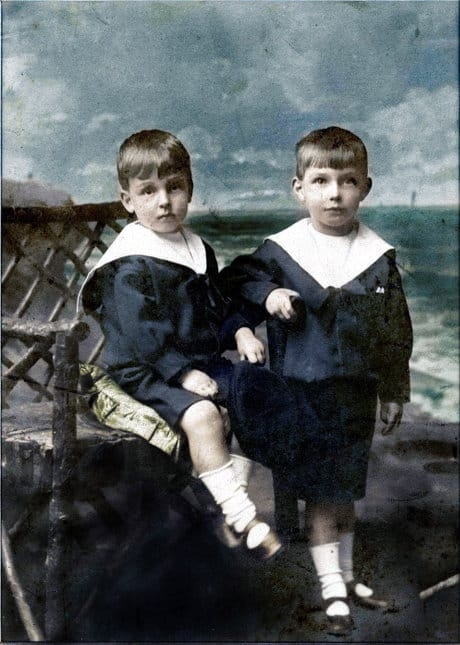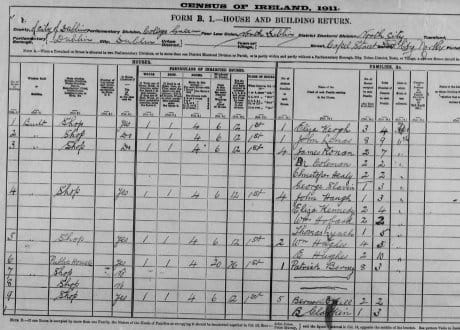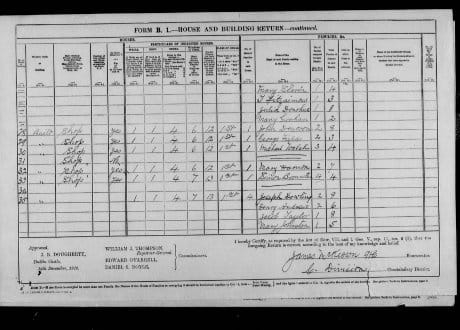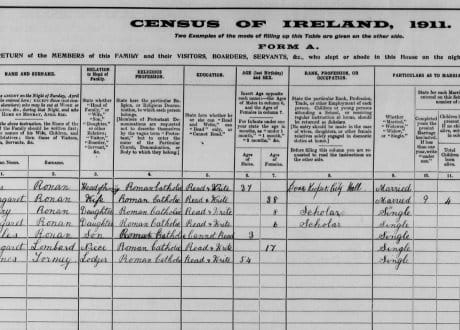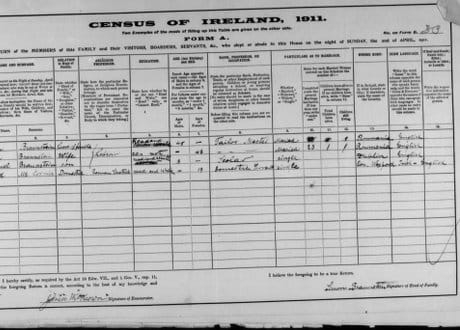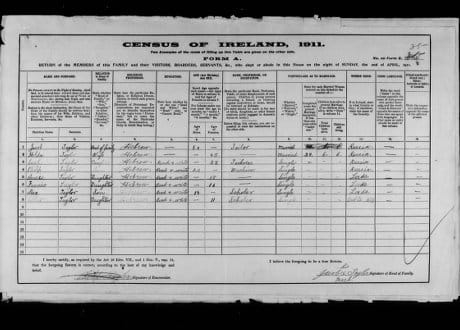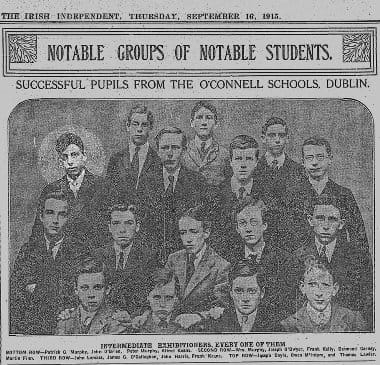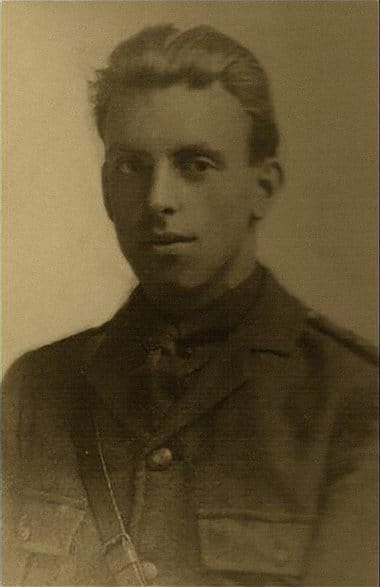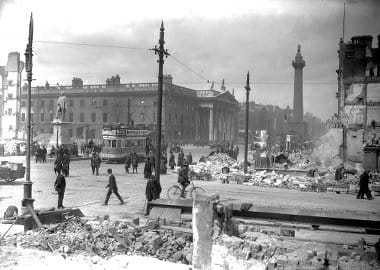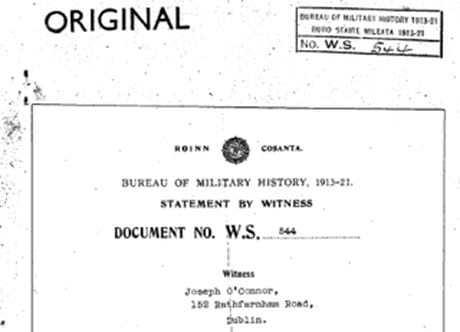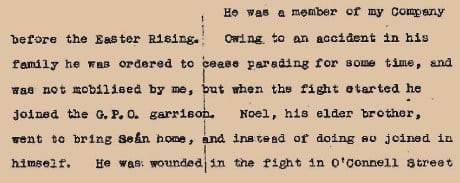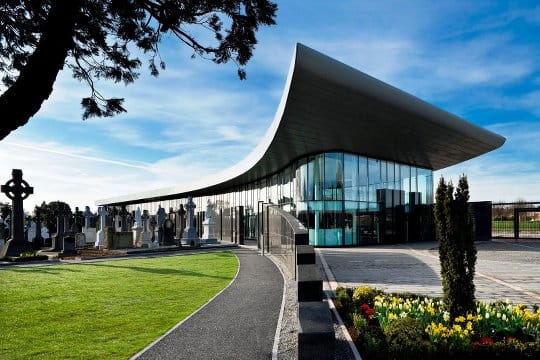
Photo: Courtesy of the National Library of Ireland
Research Profile: Seán Lemass
The life and world of the teenage Seán Lemass: seen through the sources.
Reporting on Seán Lemass’s death in 1971, Pathé News speaks of his unique achievements, both national and international: thirty years a minister, and Taoiseach from 1959 -1966.
What can we discover from the online archives about the immediate world of the teenage Lemass, 1900 – 1916, who earned the title ‘boy hero’ for his activities during the 1916 Rising?
Research method
- Gather the basic genealogical information on the subject and his family by consulting the Church and Civil records.
- Examine the census returns (forms N, B1 and A) to gather information about the subject’s immediate neighbourhood; the living and social conditions.
Form N: provides the helicopter view: see at a glance the number of families in each house and the religion of the householders.
Form B1: provides the street view: view type of house and the number of rooms occupied by each family.
Form A: provides the in-house view: personal details such as age, occupation, education, language and birthplace of everyone in each house. Note the headings children born alive, children still alive in the 1911 census.
Early years: Capel street in the 1911 Census
Capel street was a busy thoroughfare, teeming with people of very varied backgrounds and social standing. Tenement buildings were common in particular stretches of the street. Twenty seven people lived above the Dairy at No. 111. Next door, above a shop, six families occupied one room per family.
The same overcrowding is evident in No. 113. Andrew Clarkin, a ‘boot top cutter’ and his wife Rosanna, ‘a boot top machinist’, shared a single room with their five children, ranging in age from fifteen to five.
As well as those who lived on the street, a constant stream of people from outside the area would have come and gone on a daily basis to the pawn shop at No. 108, through the doors of the Public Library at No. 106 and the Dublin United Trades building, at Nos. 114-116.
Taking into account all the shops and businesses around them, the Lawlor sisters would have been kept busy in the Post Office and stationery shop at No. 141. Indeed, any or all of the four postmen living in Capel Street may have worked with them.
Right in the middle of all this activity stood the DMP (Dublin Metropolitan Police) Barracks at No. 101, occupied by thirty one constables, identified on the census form only by their initials.
They came from every county in Ireland, and all listed their previous occupation as ‘farm labourer’. All except one were Catholics. Seven spoke both Irish and English.
The vast majority were young (aged between twenty and thirty) and single. Some of them may well have been employed distributing, filling in and collecting the very census forms we are able to read today.
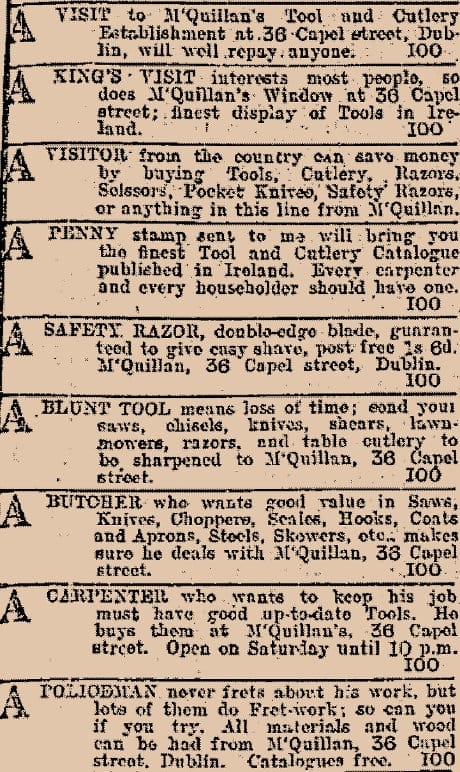
Irish Newspaper Archives: The Irish Independent, 19th December, 1911
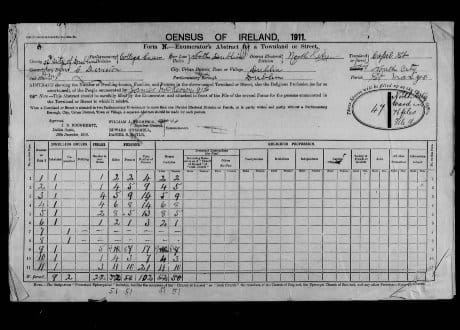
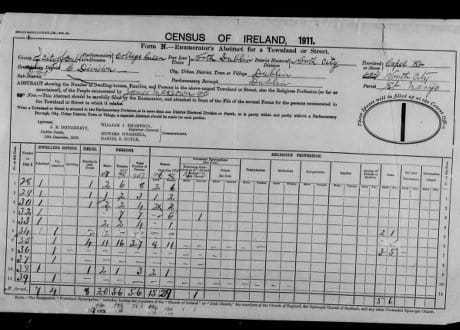
Images: The National Archives of Ireland, Census of Ireland 1911
No. 2 Capel Street
The Lemass family lived in No. 2 Capel Street, close to the quays on the north side of the river Liffey, less than a kilometre from the GPO in O’Connell Street (then Sackville Street) and within sight of the City Hall. Their immediate neighbourhood (numbers 1 – 41) stretched from the quays to the corner of Upper Abbey Street, and included several shops, two public houses, two boarding houses and a bank.
Form N
The census form for this section of the street reveals well-off and poor people living side by side: fourteen houses are recorded as uninhabited, but were in fact large shops or warehouses, such as McQuillan’s Tool and Cutlery Establishment at No. 36, described as having both a shop and workshop.
Read their very modern style advertisement to appreciate the range of their services. Send a penny stamp and they will send you a catalogue by return.
A sweet factory at No. 17 promised the finest boiled sweets and may have announced its presence by the smell:

Eleven houses are occupied by a single family (including the Lemass family). Check.
All were Catholics. Two families of the Jewish faith lived in Nos. 33 and 35. Check.
Form B1
This form identifies the names of the occupants of each house and indicates the level of comfort or hardship of their living conditions.
All the inhabited premises in this part of the street are described as ‘shop’ with the exception of No. 6 which was a public house.
- The Lemass family had plenty of room and privacy in their 8 roomed house, over the shop.
- Next door, James Ronan’s family shared with the Colemans, Healys and Slavins.
- The Ronans occupied two rooms in the house. Check.
- The Braunsteins, as a single family unit, lived comfortably in No. 33; 4 people in 4 rooms.
- However, eight of the Taylors occupied one room in No. 35 with 3 other families living in the house. Check.
Form A
This form provides a detailed picture of the household.
The Ronans
James worked nearby as doorkeeper in City Hall. He lived with his wife Margaret, his three children, his 17-year-old niece Margaret and a 54-year old lodger in obviously cramped conditions. All the adults could read and write. All were born in Dublin. Check.
The Braunsteins
Simon, a master tailor and his wife a tailoress, were born in Romania, and are described as of the ‘Hebrew religion’. Their 8 year old son was born in Dublin. Lina, his wife cannot read or write English. They had a domestic servant, a Catholic, born in Wexford who spoke Irish and English. Check.
The Taylors
Jacob Taylor was also a tailor. He, his wife Hilda and the eldest two children were born in Russia. The next two children were born in Leeds and the youngest was born in Dublin. The children ranged in age from 22 to 11; all lived in one room. They are also described as of the ‘Hebrew religion’. Neither parent can read or write English. Jacob puts an X (his mark) instead of his signature at bottom of the form. Check.
Capel Street 1921
The British army in Capel Street 1920/1921.
Note the shop fronts on left hand side of picture: Skeffingtons in No. 24 with Egans on the first floor. Williams are next door selling tea and groceries and at No. 25. Millers run a business a few doors away.
These shop fronts would have been very similar to the streetscape known to the teenage Lemass.
